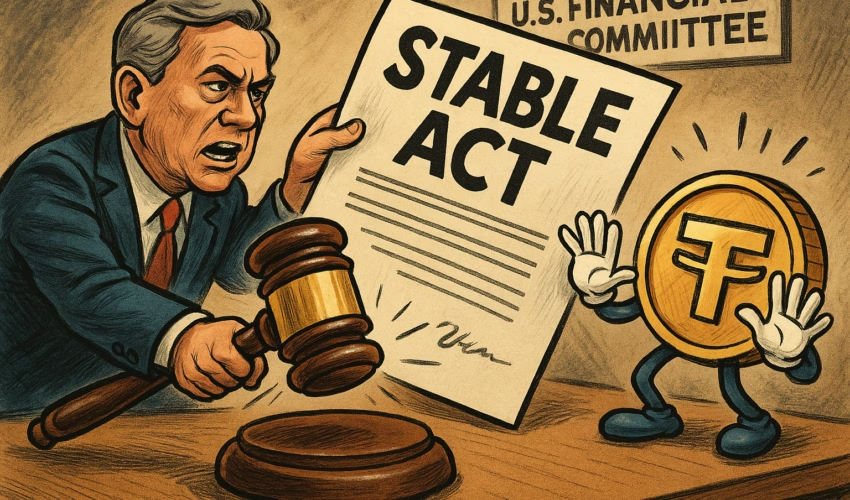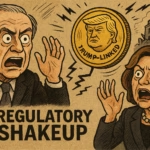Legislation Aims to Define and Regulate Payment Stablecoins
The U.S. House Financial Services Committee has passed the Stablecoin Transparency and Accountability for a Better Ledger Economy (STABLE) Act, a significant step toward establishing a regulatory framework for stablecoins in the United States.
The bill was passed along party lines, with Republicans voting in favor and Democrats opposing, underscoring the growing divide over how digital assets should be regulated.
Key Provisions of the STABLE Act
The STABLE Act introduces a set of comprehensive rules for the issuance and management of payment stablecoins—digital assets that are pegged to fiat currencies and intended for everyday use in transactions.
Some of the core components of the bill include:
-
Mandatory registration for stablecoin issuers with federal and/or state regulators
-
Requirements for issuers to maintain 1:1 reserves in high-quality liquid assets, such as cash or Treasury bills
-
Redemption rights, ensuring users can convert their stablecoins back to fiat at any time
-
Restrictions on algorithmic stablecoins, particularly those that do not maintain transparent reserves
-
Ban on interest-bearing payment stablecoins, to prevent overlap with banking products unless separately licensed
The bill defines “payment stablecoins” specifically to exclude interest-generating instruments, which must follow different regulatory pathways.
Political Divide Over Consumer Protections
While Republican lawmakers framed the bill as a pragmatic step toward innovation-friendly regulation, Democrats expressed concern over the lack of strong consumer protections.
Ranking Member Maxine Waters (D-Calif.) criticized the bill for being too lenient and argued that it leaves out key safeguards that were included in earlier bipartisan drafts. Waters noted that without these provisions, the bill risks enabling unregulated stablecoin proliferation and consumer harm.
Republicans, on the other hand, maintained that the bill offers regulatory clarity without stifling innovation, especially in a sector that has historically lacked a formal legal framework in the U.S.
Path Forward: Coordination With the Senate
The bill’s passage through the House committee is only the first step in the legislative process. Lawmakers must now work to reconcile the STABLE Act with the Guiding and Establishing National Innovation for US Stablecoins (GENIUS) Act, which recently advanced through the Senate Banking Committee.
House Financial Services Chair Patrick McHenry (R-N.C.) has previously stated that he is committed to working with Senate counterparts to develop a unified regulatory regime.
“We look forward to aligning the STABLE Act with other proposals to ensure a balanced and secure approach to stablecoin oversight,” McHenry said.
Broader Implications for the Crypto Industry
The passage of the STABLE Act signals that stablecoin regulation is becoming a top legislative priority in Washington. This comes amid growing adoption of stablecoins in cross-border payments, DeFi, and tokenized financial products.
While the bill has yet to become law, its advancement provides early insight into the likely shape of U.S. stablecoin regulation, emphasizing:
-
Issuer accountability
-
Reserve transparency
-
Consumer redemption rights
-
Limits on non-collateralized or yield-generating models
The crypto industry will now be watching how the House and Senate navigate the reconciliation process—and whether bipartisan consensus can be reached before the end of the legislative session.
Conclusion
With the STABLE Act now cleared by the House Financial Services Committee, the U.S. is one step closer to building a comprehensive legal framework for stablecoins. While political divisions remain, the momentum toward federal regulation is undeniable—and could reshape how digital dollars operate in the years ahead.












